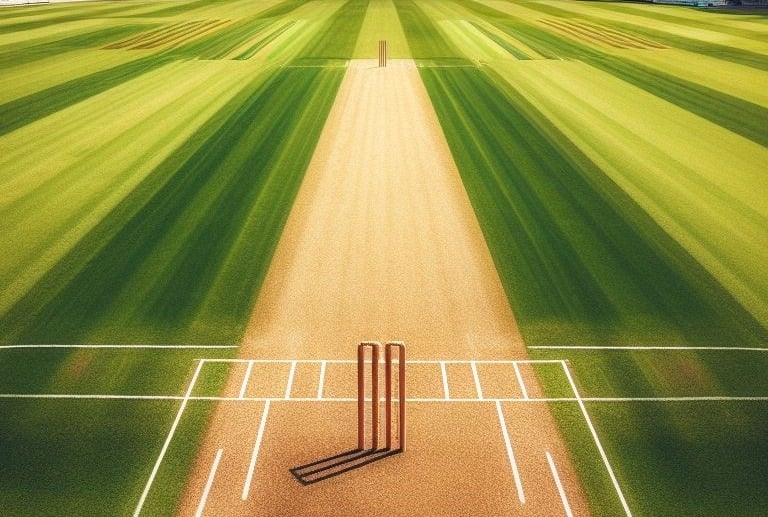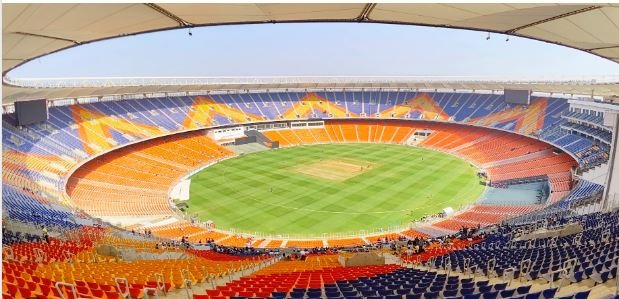ICC World Cup Pitch Rating
ICC rates the Indian pitches used in the ODI World Cup 2023
SPORT


CRICKET WORLD CUP 2023 PITCH RATINGS
THE SURFACE OF THE PITCH IS AN AREA OF 'CLOSE SCRUTINY' AND OFTEN A SUBJECT OF CONTROVERSY
Credits @ end of article
Pitch and Outfield Ratings
Did you know that ICC rates the pitch & outfield of every Test, ODI & T20 international games? The surface of the pitch is an area of scrutiny and often a subject of controversy. Pitch rating was introduced in 2006 and later updated in 2018, after 12 long years.
Ratings are done after the match has been completed and are carried out by the on-duty ICC match referee. This feedback is used by ICC to help improve the pitch and outfield for future cricket matches. These ratings do NOT apply for domestic or franchise cricket matches. Usually, it's an issue if the ratings are 'below average, poor or unfit'.
The hand sketched images [while not perfect or upto scale] indicate that tracking is technically feasible. The technology to track and predict the ball's trajectory is in use. The deviation of the ball from the wickets can be calculated. Degree of turn, swing, bounce and carry can be tracked through the entire match.
The results can then be combined and analysed statistically and visually to determine excessiveness, inconsistencies, averages and occasional deviations of the balls bowled during the match. Such results will help the match referee's RATE the PITCH accurately based on factual data points.
Swing Tracking
Bounce & Carry Tracking
Ball tracking starts from the time, the ball is released from the bowler's hand to the location where it hits the ground and either spins, swings, or bounces.
In any of the above cases, the degree of swing, bounce, or swing can be set to different baseline values defining minimum, average, and excessive.
The tech. can then be adjusted to measure the deviation of the ball after pitching. These can be recorded throughout the match and across matches. The collection of data can be used to predict the pitch behavior and used to make comparisons to determine excessive turn, swing, or spin. While these are easy to know through the umpire's trained eyes, the use of data will substantiate decisions
ICC's rating raised questions on the rating procedure and the interpretation of the terms used in the descriptions. While the RATING itself is not being questioned, we propose that ICC and the Cricketing boards use Ball Tracking technology.
Spin Tracking
World Cup 2023 ODI FINAL Pitch Rating
ICC recently rated the Narendra Modi Stadium Pitch as 'average', following the earlier report by ICC's pitch consultant Andy Atkinson.
An Average pitch is defined as
“It Lacks carry, and/or bounce and/or occasional seam movement, but consistent in carry and bounce. A degree of turn, but with average bounce for the spinner. Falling significantly short of “very good” with respect to carry, bounce and turn.”
Simply put it means that the pitch falls short of being a good pitch with respect to carry, bounce and turn. It has been alleged that the pitch did not turn as much as the Indian team management wanted it to, thereby not assisting the bowlers to strangle Australia in the 241 run chase. Cricket is supposedly a 'Gentle Man's game'. Will doctoring of pitches fall within this perception?
RATING ISSUES
A POOR pitch, on the other hand, is explained as...
A pitch is deemed "poor" if it "does not allow an even contest between bat and ball", whether that favors batters or bowlers. The ICC's guidance goes on to invoke "excessive seam movement", "excessive unevenness of bounce", "excessive assistance to spin bowlers, especially early in the match" and "little or no seam movement or turn at any stage in the match together with no significant bounce or carry" as well as "excessive dryness" and "excessive moistness".
Paying close attention to the definitions of AVERAGE & POOR highlights the fact that key terms are subject to interpretation.
How, exactly, does a referee determine and interpret all this? Isn't the term EXCESSIVE subject to interpretation? The words CONSISTENT, AVERAGE & OCCASIONAL are other terms that fall under this category. Being consistent by nature indicates that frequency and time are involved. Will the referee use the entire game to determine how regularly / how consistently and how excessively the deliveries misbehaved, e.g., spun or swung too much?
There's scope for improvement. It's easier to determine extreme conditions, such as too much bounce, swing, or turn. It's probably, one of the reasons, why the AVERAGE rating is used most frequently. It's diplomatic. It's right at the center of the six ratings - very good, good, average, below average, poor and unfit.
Use Of Technology.
Technology is in use for some time now and its integration into the game has come a long way. We have seen the use of technology in DRS, game analysis, predictions, statistics, use of Speed-gun, Snickometer, and much more.
Why haven't we used Ball Tracking?
What's interesting is that HAWK-EYE technology currently used in ball tracking is a potential solution to the concerns shared earlier. Hawk-Eye technology uses strategically positioned cameras to detect the trajectory of the ball and then predict the remaining trajectory. Its accuracy is 3.6mm, which is very good.
Ball tracking while widely used to determine if a player is to be given out or not, has surprisingly not been applied for PITCH RATING. The tech. exists and can be modified to cover the rating area too.


Credits
Cricket Pitch Source - Image by Microsoft Bing Image Creator By Designer
Narendra Modi Cricket Stadium Image Source: https://en.wikipedia.org/wiki/Narendra_Modi_Stadium. CREDIT - Sunny R
Cricket Ball Bounce/Carry, Spin & Swing tracking Images Source - By Author
We Would Love To Hear From You
Credits
Cricket Pitch, Swing, Spin, Bounce Tracking Images - Microsoft Bing -Image Creator From Designer
